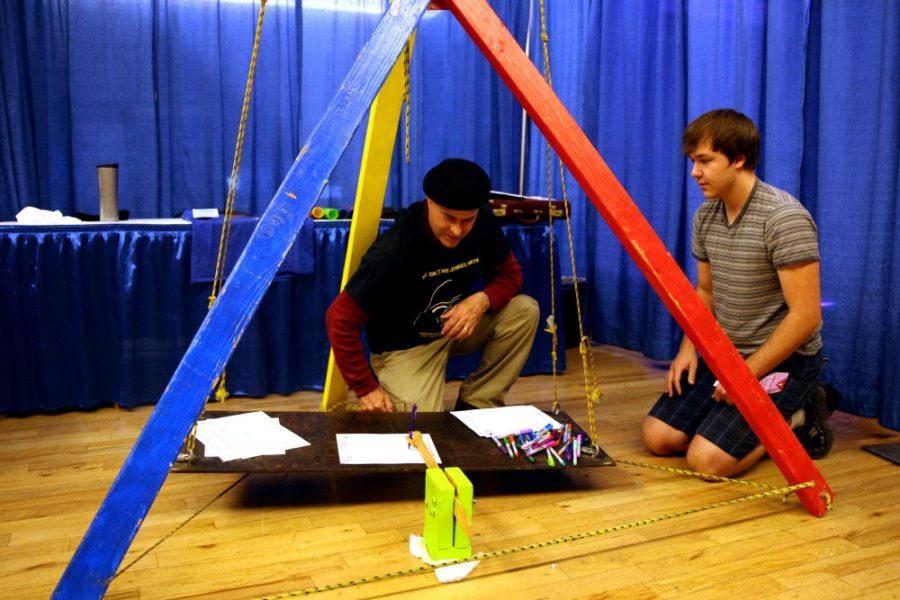Have you ever wondered if the craters of Mars were accurate in the movie “The Martian” or how a solar-powered hot water heater works? At STEAMworks, these questions and more were only an exhibit away.
Students interested in science, technology, engineering, art and math became immersed at the STEAMworks showcase. From education to research and development, the showcase highlighted the best of STEAM in Tucson on Thursday.
STEAM is an altered version of traditional STEM programs, taking the more creative side of innovation into account. Vendors and UA-led clubs, researchers and companies showcased their contributions to the STEAM community.
Both high school and college students were encouraged to attend the more than 50 exhibits on display. Several booths provided demonstrations and there were copious chances for hands-on learning.
Students had the opportunity to play with different types of edible optics candies, such as magnifiers and lenses, at the Edible Optics exhibit. These optical objects made items appear smaller, but could be eaten too. Edible Optics is working to revolutionize the field of scientific education through the use of these lollipops, and is hoping to make their inventions commercial soon.
“You’re also able to align the lenses in a way to make telescopes and microscopes,” said Sarina Sedgwick, a chemical engineering senior.
Sedgwick started Edible Optics along with another UA student, Jasmine Sears.
Students interested in learning more about mining had the opportunity to do so at the Modern Mining booth. The booth allowed students to investigate the impact of mining on Arizona’s economy and to explore the changing nature of mining as they embrace sustainability.
“Arizona has 0.25 percent of their land used for mining,” said Alyssa Hom, Engineering Ambassador and a senior studying mining and mineral engineering. “Mining has such a big impact on our lives. Without mining, you have no electricity and no vehicles.”
There were also several exhibits highlighting sustainability and renewable building products. Students learned how hot water is heated using a solar hot water heater at the Renewable Energy exhibit . Antifreeze, which is mixed with water, is heated by the sun and pumped through a coil submerged in water to create hot water. Solar hot water systems like the one on display are efficient alternatives to traditional water heaters in Arizona.
“If you do the energy analysis, this system will pay for itself, depending on behavior, within three to five years,” said Juan Cuadra, professor at Pima Community College. “I would love to see the day that we can get a system [so] that energy will cost 10 cents [per] watt.”
Cuadra teaches a class on solar water heaters at PCC.
At the Unraveling Martian History with Machine Learning exhibit, images from the High Resolution Imaging Science Experiment were used to create 3-D models that showcased the crater topography on the surface of Mars.
Craters on Mars are used as indicators of the planet’s history. Scientists are using them as help to figure out if there was ever life on Mars, and to understand how the environment changes with every meteor collision.
For anyone who has seen the movie “The Martian,” the area where the crew landed is accurately represented in terms of the number and types of craters that are currently seen on Mars.
“[‘The Martian’] is actually very accurate,” said Rodrigo Savage, an electrical computer engineering doctoral student. “The reason why it is accurate is because they used images from HiRISE, so they used real images of Mars.”
From sustainability to astronomy and from mining to optic lenses, the STEAMworks showcase provided new learning opportunities for all interests and helped add steam to the cogs of young minds.
Follow Natalie Robbins on Twitter.









